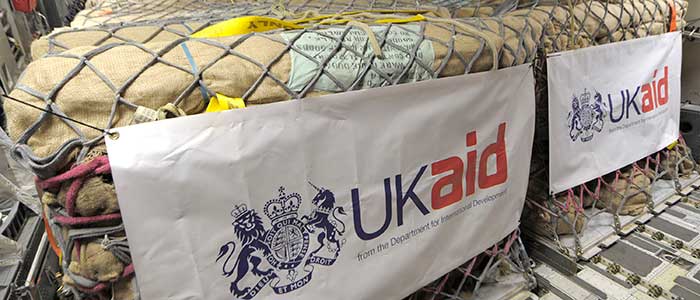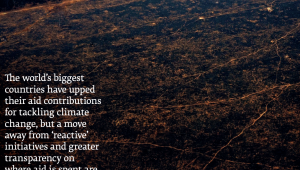Aid, or official development assistance (ODA), is unique as the only development resource flow that has poverty reduction as its core purpose and, as such, has a crucial role to play in getting poverty to zero.
Even in the growing and diversifying landscape of development finance there is no other resource flow that can feasibly replace it. It is crucial, therefore, that aid contributions rise rather than fall, and that this assistance is targeted to the places and sectors that have the greatest impact on poverty reduction, and where other resource flows struggle to sufficiently reach.
This makes the trends we’ve seen recently in ODA concerning. Development Initiatives analysed trends in financing for development in our recent report Investments to End Poverty 2018.
The latest statistics on resource flows to developing countries, published on 21 December 2018, shows that these trends are set to continue, and underline the urgency with which action needs to be taken to change trajectory if we are to end poverty and inequality in all their forms everywhere by 2030.
Currently we are moving in the wrong direction. The latest data release from the OECD DAC tells us that total net ODA fell in 2017 for the first time in five years, as large rises in absolute ODA from France and Japan were offset by falls in Germany, Norway and the USA. ODA as a percentage of GNI also fell in 21 out of 29 DAC members in 2017 – only five donors achieved the 0.7% target in 2017, down from six in 2016.
‘As well as the volume of ODA provided, attention must be given to where it goes, how it gets there and what it funds.’
As well as the volume of ODA provided, attention must be given to where it goes, how it gets there and what it funds.
The proportion of ODA not actually leaving donor countries continues at high levels (16% in 2017) – meaning that a large share of ODA is not directly targeted at the poorest people in the poorest places.
Growth in the use of loans continues to outpace that of grants, even in countries at risk of debt distress, with implications on the capacity of developing countries to allocate resources to important human capital and poverty-reducing sectors.
Additionally, while ODA to health is larger than any other single sector, ODA to key sectors for reducing poverty like education and social services has lagged behind. ODA to education, for example, fell by US$325m in 2017.
The new data does however give reasons for cautious optimism. Following minimal growth in recent years, ODA to countries at risk of being left behind grew 12% in 2017, whilst ODA to LDCs and fragile states grew by 11% and 9% respectively. Since the debt relief spike of the mid 2000s, ODA to these three key groups of countries had largely stagnated; the new data suggests the beginning of what could be a more positive trend, if action is taken to support it.
Nonetheless, the impacts of maintaining a ‘business as usual’ approach to ODA will be serious: if we don’t change the trajectory we’re on, we risk neglecting the needs of the poorest people, and falling short of the commitments of Agenda 2030.
At the High-level Political Forum in 2019, as we review progress on achieving these goals, there is an opportunity for all actors in the development community to take action to change our path so that no one is left behind.
For full analysis of the new OECD data on ODA, please see Development Initiatives’ Final ODA data for 2017 factsheet.















